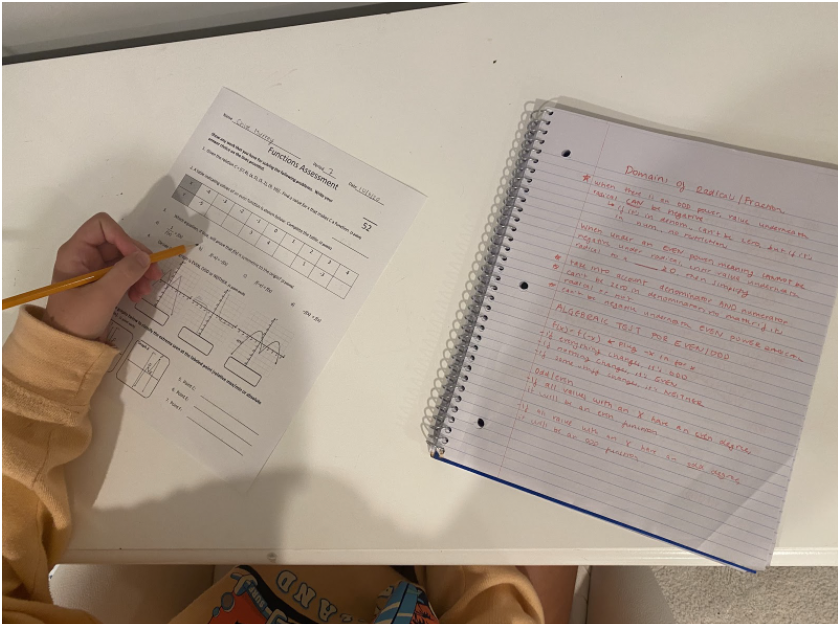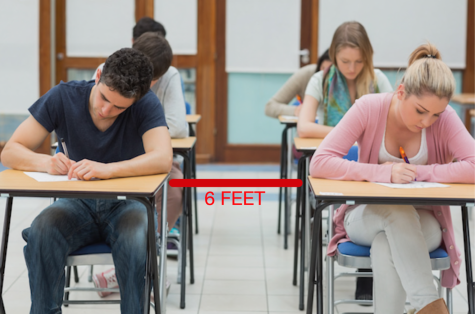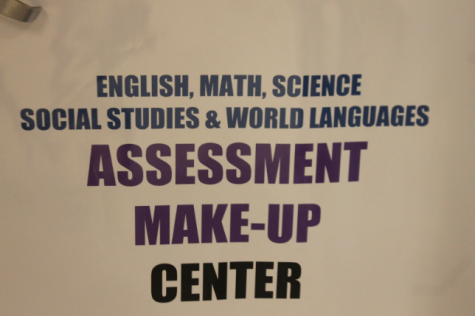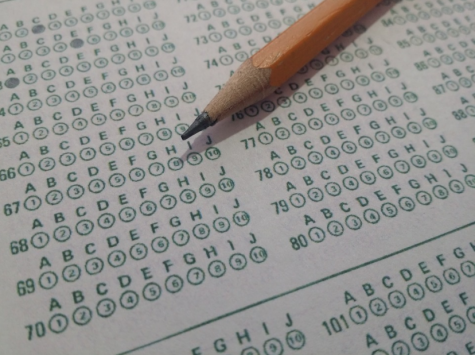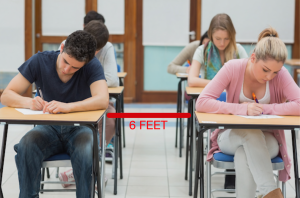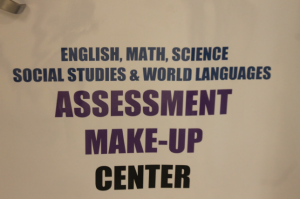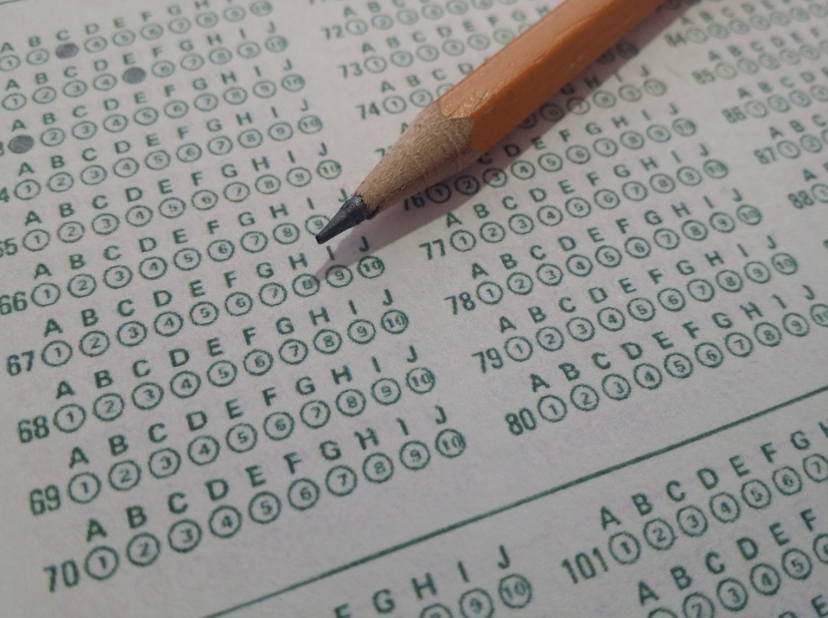Open-note test format offers desirable solution to sub-issue of hybrid learning
Students taking assessments should be allowed to use their hand-written notes in all scenarios where it is possible, as to eliminate the possible advantage that remote learners have of test-taking in their own home.
By now, we have all heard the jealous groans of Cohort A after a teacher announces that Cohort B will take an upcoming test from home, and vice versa. While it would be ideal if teachers could place full and indefinite trust in their online students during exams, it is virtually impossible to ensure that students at home are not switching tabs or glancing at their notes from the freedom of their home during tests and quizzes. For this reason, all tests should be open-note for both online and in-school students, and crafted with slightly more difficulty and complexity to compensate for this advantage.
At home, students have access to not only their notes, but an entire web of information that’s likely to provide them with any answer they seek. This gives them a huge advantage and there will likely be a disparity in grades between the two cohorts as a result. Mandating students to keep their cameras on will do nothing to eliminate the problem, as students can generally find the information they need at the click of a button.
The open-note testing format eliminates teachers’ stress that people are cheating on their exams, and it settles students’ complaints that online students have an unfair advantage. It is the only feasible format under the extenuating circumstances of COVID-19.
Careful note-taking will help students conceptualize information rather than memorize it, and is likely to reflect in their grades.
Although open-note assessments might not sound uber-appealing for teachers, there are additional benefits other than leveling the playing field for remote and hybrid students.
Primarily, students are more likely to pay attention in class and take more detailed and organized hand-written notes. Careful note-taking will help students conceptualize information rather than memorize it, and is likely to reflect in their grades. Studies have shown that students further comprehend material when they take hand-written notes, and this method of testing would definitely motivate students to do so.
It is also important to emphasize that with open-note tests, the assessments should be sufficiently more difficult. The goal of open-note testing is not to make tests easier. It is rather to pose a solution to the unfair playing field of test-taking at home versus in school.
A second option to potentially even this playing field would be to have Cohort A take the test when they are in the building, while Cohort B completes a different assignment, and Cohort B take the test when they are in the building while Cohort A completes that same alternate assignment. Yet, this solution poses a multitude of problems.
The first flaw with this alternative option is its impracticability. Teachers either run the risk of their Cohort A students sharing test content with their Cohort B students, or undergo the inconvenience of making two different tests.
However, even if teachers are happy to trudge through the tiresome process of crafting two different tests, this solution still fails to address fully-remote students. The students who opted to go fully-remote under today’s unprecedented conditions should not be penalized for doing so, but they also should not be given extra privileges.
All remote students have to take online assessments, and they cannot simply wait until they are in school with a teacher present. Approximately 8% of Staples’ students are fully-remote, and it would be naive to follow the “honor code” with a population of this magnitude. If tests are open-note for all, the advantage that the remote students have ceases to exist.
It is important to remember that there are exceptions to any pattern. Open-note tests might not be plausible under specific circumstances, especially in Advanced Placement (AP) classes. The open-note format should be used, however, in all places where it is feasible and poses more advantages than disadvantages.
Open-note tests are not just another sacrifice we have to make due to the inconvenient circumstances of COVID-19; they are, instead, a desirable method of testing that should be endorsed by any teacher interested in replacing the art of memorizing with the obtainment of knowledge. I am confident that both teachers and students would feel the benefits of this test-taking format, and it would be clearly reflected in students’ grades and stress levels.

Public Relations Director Chloe Murray ’22 enjoys her life as a twin and an aspiring journalist.
“We’re super close and we’re very similar people,”...












































